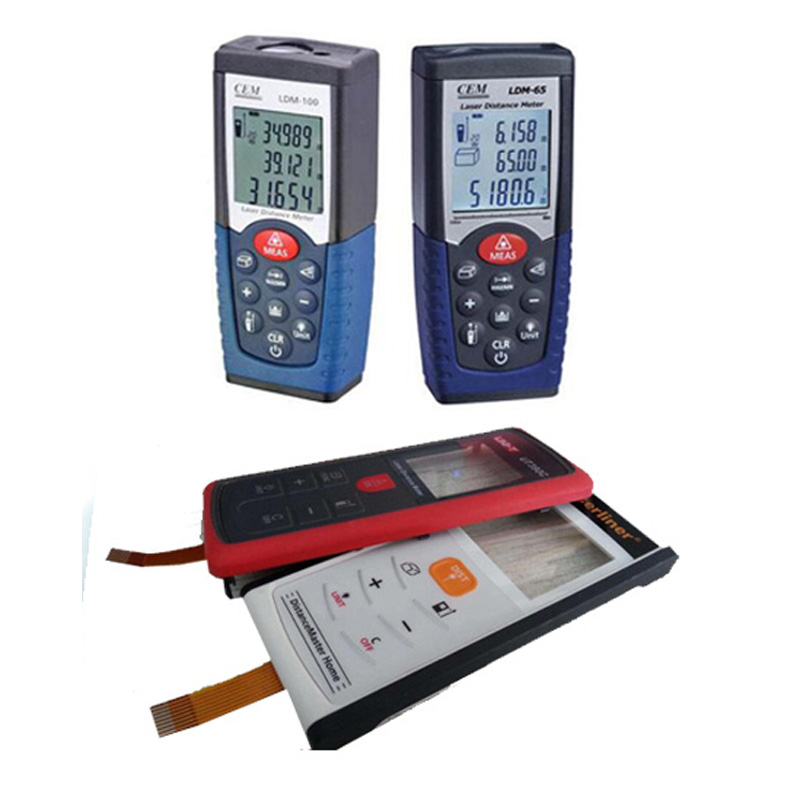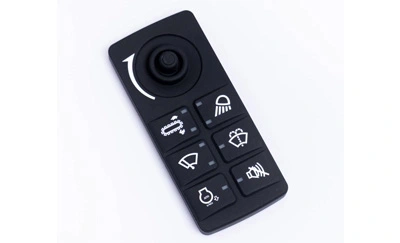Comprehending the Relevance of Membrane Layer Change in Modern Electronic Devices
Membrane switches are important elements in modern electronic gadgets. They offer a mix of capability and layout that improves individual interaction. Their sturdy and light-weight nature makes them suitable for numerous applications. As markets develop, the need for modification and progressed features expands. Recognizing how membrane layer changes add to development discloses their relevance in shaping the future of electronic devices. What lies ahead for this innovation?
The Fundamentals of Membrane Change Technology
Often forgotten, membrane button technology plays a crucial function in the contemporary electronic devices landscape. These devices, composed of numerous layers, serve as individual interfaces for various digital items, ranging from family home appliances to clinical equipment. A normal membrane layer button includes a graphic overlay, a spacer layer, and a circuit layer, which are diligently set up to develop a useful interface.When stress is related to the overlay, the circuit layer is completed, allowing signals to be sent to the tool. This technology is understood for its versatility, enabling modification in functionality, form, and layout to fulfill specific individual demands. Additionally, membrane switches are lightweight and thin, making them appropriate for applications where room is a costs. Their durability and resistance to environmental variables additionally boost their allure, guaranteeing they can endure extreme conditions while maintaining performance. On the whole, membrane layer button innovation is indispensable to developing reliable and easy to use electronic devices

Secret Advantages of Membrane Layer Switches Over
Membrane layer changes deal a number of crucial benefits that make them a preferred selection in different electronic applications. Their design enables a small form factor, making it possible for suppliers to create sleek and light-weight gadgets. Furthermore, membrane buttons are resistant to dust, dampness, and chemicals, which boosts their durability and longevity popular environments. The responsive comments offered by these buttons can improve customer experience, making them very easy and intuitive to operate.Furthermore, membrane layer switches can be tailored with diverse graphics and colors, permitting one-of-a-kind branding chances. The production process is generally cost-efficient, especially for high-volume production, as it lowers assembly time and streamlines layout. Ultimately, membrane layer switches over need marginal maintenance, adding to lower total operational costs. These benefits underscore their expanding appeal in modern electronic devices, where dependability and easy to use user interfaces are important.

Applications Throughout Various Industries
The convenience of membrane switches over enables their prevalent fostering throughout different sectors. In the clinical field, they are commonly made use of in diagnostic tools and individual tracking systems, providing a sturdy interface resistant to impurities. The auto sector uses membrane layer switches for control panel controls, boosting individual experience with streamlined designs that hold up against extreme conditions. In customer electronic devices, they work as control board for gadgets such as microwaves and coffee manufacturers, offering a straightforward interface that is easy to clean. The aerospace field employs membrane layer switches in cabin controls, where integrity and area effectiveness are paramount. Furthermore, the commercial sector leverages these buttons in machinery and control systems to ensure durable procedure in demanding settings. This wide range of applications highlights the adaptability of membrane buttons, making them indispensable components in improving capability and user interaction across varied technological landscapes.
Modification and Style Flexibility

Future Patterns in Membrane Change Development
Arising patterns in membrane layer button development indicate a growing emphasis on enhanced capability and integration with clever modern technologies. As consumer demand for extra sophisticated electronic gadgets rises, manufacturers are concentrating on producing membrane changes that not only serve standard functional duties but additionally integrate attributes like touch level of sensitivity, backlighting, and haptic feedback.Furthermore, advancements in products are anticipated to improve longevity and ecological resistance, making membrane switches appropriate for diverse applications in industries such as health care, vehicle, and customer electronics. The combination of capacitive touch technology is likely to come to be more widespread, enabling sleeker designs and enhanced individual interfaces. membrane switch.Additionally, the rise of the Net of Points (IoT) is motivating the development of membrane layer changes that can interact wirelessly with various other devices, enhancing interconnectivity. In general, the future of membrane switch modern technology appears promising, driven by technology and the quest of straightforward remedies
Often Asked Questions
How Do Membrane Switches Over Contrast to Standard Mechanical Switches?
Membrane layer buttons, being more space-efficient and using a streamlined style, contrast with standard mechanical switches that his response offer responsive responses. The former usually feature adjustable graphics, while the latter typically ensure durability and dependability in different sites applications.
What Materials Are Generally Made Use Of in Membrane Layer Switch Manufacturing?
Membrane layer switches are normally generated making use of materials such as polyester, polycarbonate, and published conductive inks. These materials provide adaptability, responsiveness, and sturdiness, making them ideal for various applications in electronic devices and individual interfaces.
Can Membrane Layer Switches Over Be Repaired or Recycled?
Membrane layer buttons can commonly be fixed, specifically if small problems arise, such as sticky failing or surface damage. Complete reuse is usually limited due to wear and potential destruction of materials over time.
How Do Environmental Factors Influence Membrane Switch Efficiency?
Environmental factors, such as temperature, moisture, and exposure to chemicals, greatly affect membrane layer switch efficiency. Extreme problems can cause deterioration, affecting responsiveness and durability, inevitably compromising the capability of the gadget in numerous applications.
What Is the Common Life-span of a Membrane Switch?
The typical life-span of a membrane button generally varies from 1 to 5 million actuations, depending upon variables such as usage frequency, ecological conditions, and the products made use of in manufacturing, influencing sturdiness and performance durability. A normal membrane layer switch is composed of a visuals overlay, a spacer layer, and a circuit layer, which are carefully assembled to produce a useful interface - membrane switch.When pressure is applied to the overlay, the circuit layer is finished, permitting signals to be sent to the device. The responsive feedback offered by these buttons can boost user experience, making them instinctive and simple to operate.Furthermore, membrane switches can be customized with diverse graphics and shades, enabling for one-of-a-kind branding opportunities. As consumer demand for a lot more advanced digital gadgets rises, suppliers are focusing on producing membrane layer switches over that not just offer standard operational functions however likewise integrate functions like touch sensitivity, backlighting, and haptic feedback.Furthermore, developments in materials are expected to improve toughness and environmental resistance, making membrane layer switches over ideal for varied applications in sectors such as healthcare, automotive, and consumer electronic devices. The assimilation of capacitive touch innovation is likely to become more widespread, enabling for sleeker styles and improved customer interfaces.Additionally, the surge of the Web of Points (IoT) is motivating the advancement of membrane switches over that can communicate wirelessly with other gadgets, boosting interconnectivity. Membrane switches, being more space-efficient and offering a streamlined style, comparison with conventional mechanical buttons that supply tactile responses